This was published 10 years ago
Cradle Mountain, Lake St Clair National Park: Trekking Tasmania's Overland Track in winter
By Dugald Jellie
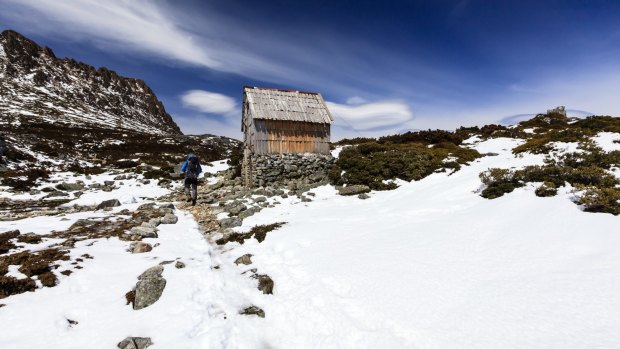
Through the snow to kitchen hut, on the flank of Cradle Mountain.Credit: iStock
On the sixth day it snowed. Inky clouds from the west dropped rain, drumming hard on the hut roof before cold air from the south came at midnight, blowing from Antarctica, from world's end, turning the night sky silent with perfect snowflakes. Snow fell all morning and through the day and into the dark, and beyond, as if never knowing how to stop.
Our walk in the park, it turned a lighter shade of pale.
Drama already had followed us through this wild heart of Tasmania. We'd cut tracks in old snowdrifts on the shoulders of Mount Ossa and made a mess of perfectly good snow coming down. Wind had knocked us sideways. And on the second morning a good-hearted 56-year-old policeman from Western Australia – the first person to sign up to Cradle Huts' inaugural winter walk of the Overland Track – left our party breathless, in a rescue helicopter.
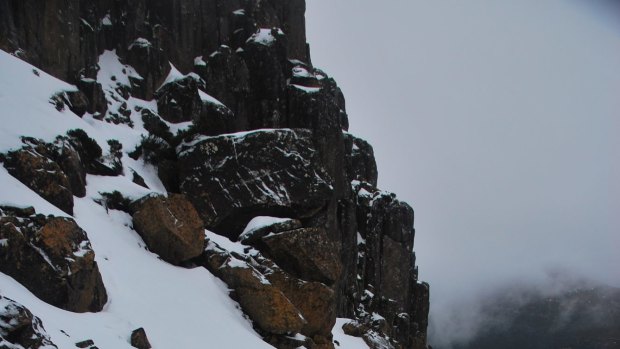
Walkers go Indian file along the side of Cradle Mountain.Credit: John Braid
In a scrim of low weather, in howling wind, he was lifted by a big yellow bird into the clouds, flown to safety.
Before the walk, we'd signed indemnity forms, been required to buy travel insurance, and had self-assessed our fitness. Our packs were weighted with safety gear; an emergency sleeping bag and mat, jingling crampons, and snowshoes that acted mostly as wind sails. All carried thermals, and puffy jackets, and enough clothing for the most malevolent conditions.
"This is a holiday for you guys," says John Braid, 30, our head guide who's otherwise a high school teacher with a sharpened sense of adventure, briefing us at Cradle Valley before stepping into mist-shrouded mountains. "We want you to enjoy the walk."
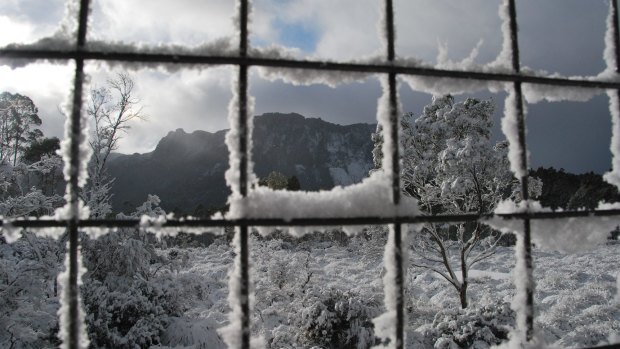
The view through a lattice of snow .Credit: John Braid
And mostly, that is how it is: a seven-day ramble, Indian file, passing the ice-chiselled ribs of Cradle Mountain, leaving the everyday behind; travelling south, beyond mobile phone reception, into the romantic wilds of central western Tasmania. The 65-kilometre Overland Track in summer is a rite of passage. In winter, here's a crucible.
"It's the next step," says Braid. "Doing it in winter extends the chances of risk, of finding the worst conditions."
Each of us has our own reasons for being here. A 41-year-old concreter from wheat country north of Perth, tall and lean, with a one-way ticket to Launceston, seeks challenges. "I've never walked in snow before," he says. "Never done anything like this before." There's a 36-year-old human resources manager from Ballina, who three years ago so enjoyed the camaraderie of a Cradle Huts summer walk, she's returned for the winter version. And there's Karl, the policeman from Waroona, carrying scars from a workplace injury and with a love poem in his heart, who for now looks for wider horizons.
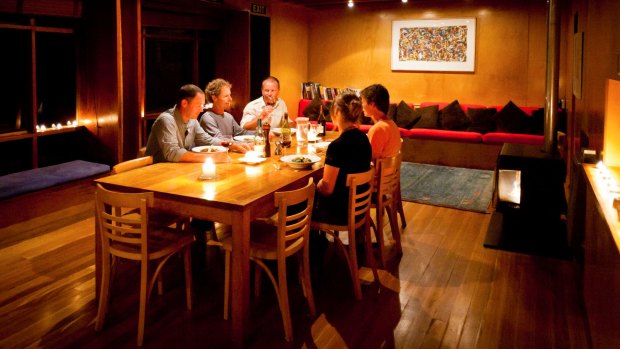
Dinner at Barn Bluff Hut on Overland Track.
I come with wondering. I did the track long ago with my mother, as a pack horse, carrying tent and food and cooking pots and a little fuel stove, for her 60th birthday. Five years later, the two of us did it again.
Ever since, I've been curious. How must these forsaken uplands – scoured smooth by ice, shaped by cirques and erratics and kame moraines as part of Australia's largest relic of glaciation – look during the long rasp of winter? How must this landscape be when furrowed in winter's deep snows? And after a long day in wet boots, what does it mean to encounter a hot shower, a bottle of merlot, a cheese platter?
I want to see this wild place at a wild time. It only helps, doing so on a guided tour, with private huts and their private pleasures.
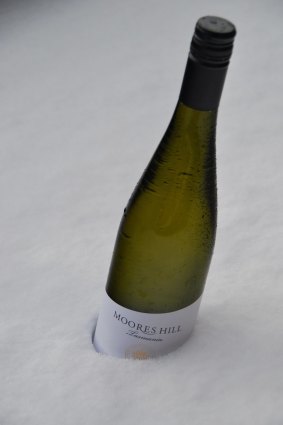
Wine is easily chilled.Credit: John Braid
"It opens up all sorts of doors," says Kenna Reid-Clark, 21, one of our two guides, of the emotive response to the walk's splendid isolation. All skinny bare legs and gingery dreadlocks, from a town called Meander, he tells gentle stories about his pet Tasmanian devil and serenades us most nights with a guitar and beautiful folk ballads. "It's a harsh place but it's also incredibly peaceful. There's clarity in the walk. A deep stillness overcomes the land in winter."
In 1987, when architect Ken Latona, schooled by Glenn Murcutt and his philosophy of "touch the earth lightly", built the first private huts within the Cradle Mountain Lake St Clair National Park, his was a blueprint for the possibilities of ecotourism. His striking vision also helped foster a prized natural resource: Tasmania's vital guiding community.
As memorable as the craggy dolerite spires of Cradle Mountain may be, tilted skyward into brooding cloud, it's our Cradle Huts guides that linger longest in the memory. Only in Tasmania, it seems, an island steeped in myth-making, could such young men and women be found: hardy, resourceful, creative, and inspiring in their capabilities.
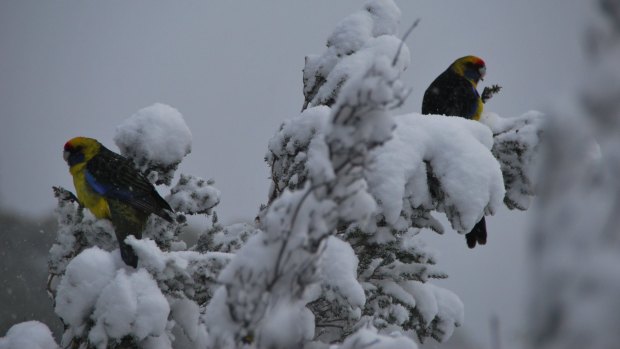
Birds provide splashes of colour to a mostly white world.Credit: John Braid
"The walk gives people breathing space," says John, who's plied the path more than 70 times and found intimate understanding of its sense of belonging. "It's an opportunity to get in touch with the natural world, to step outside all our airconditioned creature comforts, into this primeval place."
On our walk, he dances through nature's garden with a pack burdened with food and safety essentials (and two bottles of single malt whisky), whistling on the way, singing songs, informing always about the plants, the rocks, the animals, and the long history of prospectors and fur trappers who first cut tracks into these parts.
When the Tasmanian Walking Company (owners of the Cradle Mountain Huts Walk) was acquired late last year by Brett Godfrey and Rob Sherrard – co-founders of Virgin Australia – they decided to leverage their investment by opening the business to winter walks..
Staff have winter-proofed the company's five elegant ecolodges with new hot water services and insulated plumbing, and designed contingency plans for the most adverse weather. They've also stocked up the pantries. An honest weariness at each day's end is sated by a selection of local wines and fine camp cookery. Quince paste, lamb and wallaby chipolatas, warm barley salad, creme brulees – no one walks on an empty stomach.
On the third day the sun comes out and this world unto itself unfolds; grand in scale, frozen in time. Fingers and toes are cold, snow hangs on nearby peaks – Mount Pelion West, Mount Oakleigh, Mount Achilles – and it looks as if we could be entering a Norse fable.
For two days, skirting the extravagant landforms around Cradle Mountain and crossing the raised button grass moors by Lake Windermere, epic vistas were viewed mostly through a japara hood peephole. Rain as sharp as box nails, blowing near horizontal, clattered around our ears. Our walk was a study in ice and snow and slurry, and all the ways the wind can blow. We knew we were alive.
Routines are set. Coffee and vanilla-spiced porridge for breakfast, mugs of hot soup for lunch. It feels good each morning to feel the weight of the pack, to be walking. Days end with hot showers and the heady aroma of baking bread as three-course meals are prepared and served. Evenings are for reading, map gazing, yoga stretches, card games, and sharing stories and notes on blisters.
"You can tell when the weather's from the south," says Kenna. "It gets right into your bones."
For two days it snows: light snow, powdery snow, textbook snow. Blue clouds pull apart every so often for chanced views of the Du Cane and Travellers Range, and then it snows some more, and each footfall becomes a step of faith, and this is the Overland Track as so few have known it.
"Enjoy the silence, the mindfulness of it," says John. "It's a chance to really focus on yourself, and where we are and what we're doing."
And so it goes on the slow walk to the deep and stilled waters of Lake St Clair. Each of us at one with the sky, the ice, the wind, the snow, the land, the mountains, with a block of chocolate, with ourselves. My legs are strong, my fingers cold. For a week of our lives we've stepped away from all the affairs of the world and are all the richer for having done so. Together we have walked the Overland Track, in winter.
TRIP NOTES
MORE INFORMATION
GETTING THERE
All major domestic carriers run daily flights from Sydney and Melbourne to Launceston.
WALKING THERE
Cradle Mountain Huts Winter Walk have six scheduled winter 2015 departure dates from June to August. Packages cost $3450 a person twin share and include guides, hut accommodation (excluding the first night at Cradle Mountain Lodge), food and beverages, National Parks passes, transfers and some equipment. Phone 03 6392 2211 or see www.cradlehuts.com.au.
The writer travelled as a guest of Cradle Huts and Tourism Tasmania.
Sign up for the Traveller Deals newsletter
Get exclusive travel deals delivered straight to your inbox. Sign up now.